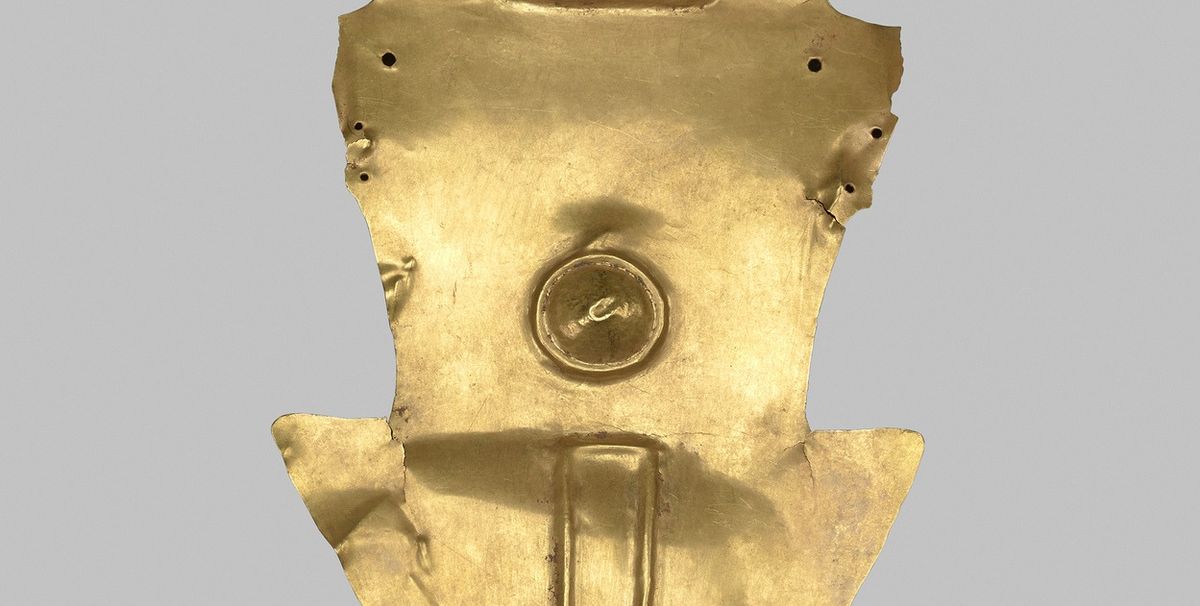A unique Pre-Columbian gold breastplate, given to Queen Elizabeth in 1953, has been rediscovered in the Royal Collection and is now on display in Buckingham Palace. It was presented to the Queen to mark her coronation by the Panamanian president General José Remón Cantera. The importance of the piece went unrecognised and it was put into storage, remaining unknown to specialists.
The gold breastplate stayed there until earlier this year when the Royal Collection curator Sally Goodsir examined it during preparations for an exhibition on gifts received by the Queen. In the Buckingham Palace display, which opened on 22 July, it is dated to the 13th century.
The latest research suggests the breastplate is considerably older and more important. The Royal Collection contacted Kate Jarvis, a British Museum curator of the Americas. She confirmed that it is tumbaga work, a term for an alloy of gold and copper that was used in Pre-Columbian central America.
Jarvis told The Art Newspaper: “When I saw it my reaction was surprise and delight. It is a substantial gold object and inspires awe.” She says that it is “unique, although there are a handful of surviving pieces which bear some resemblance”. Jarvis now believes that it could date from as early as AD 700.
Warwick Bray, a professor emeritus at University College London, has also authenticated the find. He says that similar items discovered in a grave near the Panama Canal date from AD 700-1000. Although described as a breastplate, Bray believes the Royal Collection piece is more likely to be a very large pendant which would have hung from a necklace. It would have been worn in life and then buried with the illustrious owner.
The 37cm-high piece has suffered some damage, possibly when it was excavated. No information is available about where it was found, which is most unfortunate since this makes it difficult to date and to put into context. It is unknown how or where the Panamanian president acquired the antiquity. In 1953 it was readily accepted by the Queen as a gift, although attitudes towards the acquisition of archaeological material have changed considerably since then.
The breastplate is now on show in the exhibition of Royal Gifts in the state rooms of Buckingham Palace (until 1 October). No decision has been taken about whether it will go on display permanently or returned to storage.


